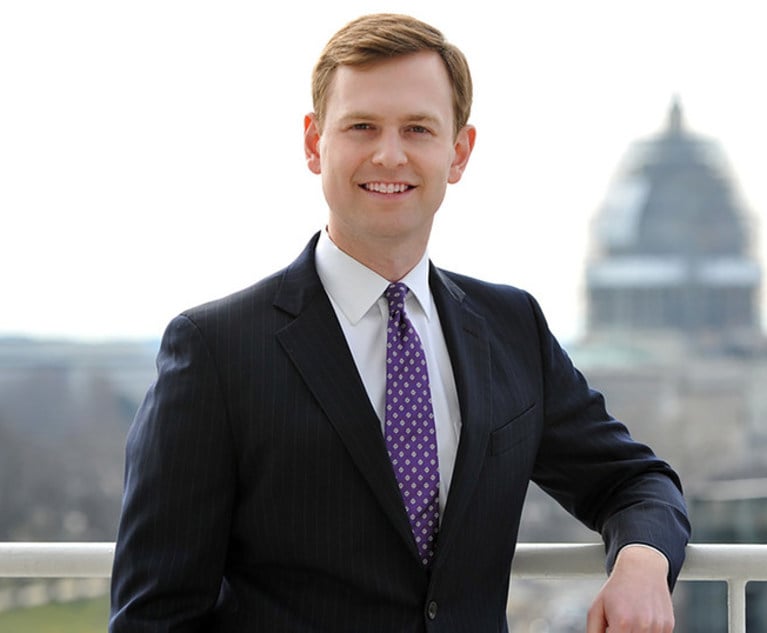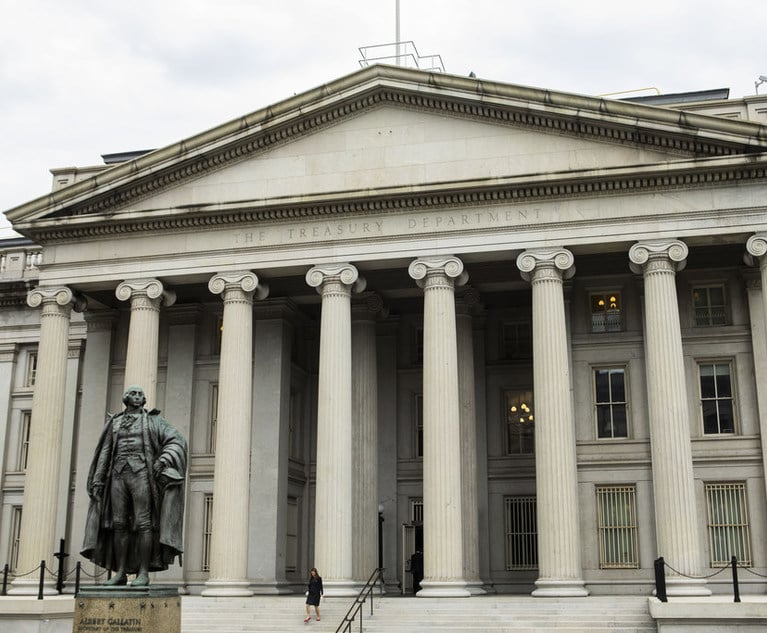Raj Rajaratnam verdict vindicates white-collar wiretaps
Wiretaps combined with witnesses make a solid case against Galleon CEO.
June 30, 2011 at 08:00 PM
6 minute read
Of all the splashy stories of the Galleon Group insider trading case, the role of wiretaps has the most lingering significance for in-house counsel. Rarely used in white-collar cases, the wiretaps gave prosecutors a vivid picture of a sprawling network within the now-defunct, multibillion-dollar hedge fund that garnered inside tips to drive investment decisions. The question was: Would this hardball prosecutorial tactic stand up at trial?
The May conviction of Galleon Founder Raj Rajaratnam on all 14 counts against him seems to provide a resounding affirmative.
“This was a test case for wiretaps on several levels,” says Scott Meyers, a partner at Ulmer & Berne. “One: Would a judge allow the wiretaps? Two: Will the judge allow the information in court? Three: Can you effectively use it with a jury? And the last test will be whether the appellate courts maintain the conviction.”
So far prosecutors are three-for-three, going for a clean sweep.
The Rajaratnam case could easily herald the broader use of white-collar wiretaps, and not just in the insider trading arena. The high-profile case demonstrated several advantages audio evidence offers at trial.
“I expect that we'll continue to see use of wiretaps and other aggressive law enforcement techniques in the white-collar area,” says Seth Levine, a partner at Levine Lee. “These crimes often come down to questions of intent, which are notoriously hard to prove. Wiretaps provide some of the clearest insight into a person's state of mind.”
Powerful One-Two Punch
Insider trading defense often hinges on the complexity of the market itself, coupled with the notion that the defendant is smarter than most everyone else. Defenders argue that everyone has access to the same public information, but the defendant was able to outperform the market because of superior insight, intelligence or technology. Pile on a lot of financial-system esoterica and the average jury's eyes will glaze over as the shadow of their doubt grows.
Wiretaps pull the rug out from under that strategy and leave defendants to contend with their own words.
“One of the strongest tools of the defense bar has been the ability keep your client off the stand,” Meyers says. “Wiretaps effectively take that away from you because your client essentially ends up on the stand in the worst possible light, and you can't even let him defend himself without exposing him to cross-examination.”
Jurors who might struggle to understand the subtleties of trading rules have little trouble recognizing the tone and even subtext of a conversation about breaking the law. Everybody knows liars and crooks, and audio evidence allows laypeople to draw on personal experience and reach a confident consensus.
It makes it much less abstract,” Meyers says. “This case shows that, in a fairly complicated situation—even against a very sophisticated defendant—the government can convince the jury, and the defense can't even get the benefit of the doubt.”
Wiretaps also serve the purpose of corroborating the testimony of cooperating witnesses—which greatly benefits prosecutors.
“When an alleged accomplice tells the jury that he engaged in criminal conduct with the defendant and acted at the defendant's direction, the government's case often rests on the jury's evaluation of the accomplice's credibility,” Levine says. “But when the government can offer corroborating evidence, particularly contemporaneous recording with the defendant that corroborates the accomplice's testimony, that can be very powerful evidence.”
Caught in the Act
Considering that type of leverage, it's only logical that prosecutors will soon bring wiretaps to bear in other complicated white-collar cases that lack smoking-gun documents, experts say.
“You can use this in any white-collar case involving conspiracies that are established only by what people said and what they were thinking at the time as reflected by what they said, as opposed to document-intensive cases,” Meyers says.
That could mean anything from accounting violations to Medicare fraud, but there is one critical rub.
“The challenge in white-collar cases is that traditionally the investigations get started after the conduct has happened,” says Rich Strassberg, chair of the white-collar crime and government investigations practice at Goodwin Procter. “Similarly, in accounting fraud, for example, the company's financials come out and only subsequently— maybe even years later—it turns out that disclosures connected to the financials weren't accurate.”
There's a good reason prosecutors perfected the use of wiretap evidence in mob and drug cases: These ongoing, organized criminal activities provided the time needed to catch perpetrators in the act. The corporate crime landscape is changing, however, and from amplified false claims enforcement to new provisions of the Dodd-Frank Act, there has never been more encouragement for whistleblowers to report ongoing crimes. Coupled with the decade-long drive toward greater individual criminal accountability, there's every reason to believe wiretaps will increasingly crop up in the corporate context.
“When you have an instance like this case, where cooperators or whistleblowers talk to prosecutors while this type of activity is happening,” Strassberg says, “they will try to use tools like wiretaps whenever possible.”
Cautionary Tale
In the current era of heightened regulatory and prosecutorial scrutiny, counsel have greater compliance responsibilities than ever. As effective as training efforts may be, there are always a few temptation-prone employees for whom a cautionary tale is the best message.
Part of the reason the Department of Justice pursues individuals so vigorously is for a deterrent effect, and Rajaratnam's fate demonstrates the growing number of ways criminals can get caught.
“It's important for in-house counsel to make sure people understand that there is really no safe place out there,” Meyers says. “Everybody should be doing the right thing all the time anyway, but if you believe there's a way of hiding from that, think again, because it just got much less likely that you're going to find a safe place to hide.”
This content has been archived. It is available through our partners, LexisNexis® and Bloomberg Law.
To view this content, please continue to their sites.
Not a Lexis Subscriber?
Subscribe Now
Not a Bloomberg Law Subscriber?
Subscribe Now
NOT FOR REPRINT
© 2025 ALM Global, LLC, All Rights Reserved. Request academic re-use from www.copyright.com. All other uses, submit a request to [email protected]. For more information visit Asset & Logo Licensing.
You Might Like
View All
Internal Whistleblowing Surged Globally in 2024, So Why Were US Numbers Flat?
6 minute read
FTC Finalizes Child Online Privacy Rule Updates, But Ferguson Eyes Further Changes

Supreme Court Reinstates Corporate Disclosure Law Pending Challenge
Trending Stories
- 1New York-Based Skadden Team Joins White & Case Group in Mexico City for Citigroup Demerger
- 2No Two Wildfires Alike: Lawyers Take Different Legal Strategies in California
- 3Poop-Themed Dog Toy OK as Parody, but Still Tarnished Jack Daniel’s Brand, Court Says
- 4Meet the New President of NY's Association of Trial Court Jurists
- 5Lawyers' Phones Are Ringing: What Should Employers Do If ICE Raids Their Business?
Who Got The Work
J. Brugh Lower of Gibbons has entered an appearance for industrial equipment supplier Devco Corporation in a pending trademark infringement lawsuit. The suit, accusing the defendant of selling knock-off Graco products, was filed Dec. 18 in New Jersey District Court by Rivkin Radler on behalf of Graco Inc. and Graco Minnesota. The case, assigned to U.S. District Judge Zahid N. Quraishi, is 3:24-cv-11294, Graco Inc. et al v. Devco Corporation.
Who Got The Work
Rebecca Maller-Stein and Kent A. Yalowitz of Arnold & Porter Kaye Scholer have entered their appearances for Hanaco Venture Capital and its executives, Lior Prosor and David Frankel, in a pending securities lawsuit. The action, filed on Dec. 24 in New York Southern District Court by Zell, Aron & Co. on behalf of Goldeneye Advisors, accuses the defendants of negligently and fraudulently managing the plaintiff's $1 million investment. The case, assigned to U.S. District Judge Vernon S. Broderick, is 1:24-cv-09918, Goldeneye Advisors, LLC v. Hanaco Venture Capital, Ltd. et al.
Who Got The Work
Attorneys from A&O Shearman has stepped in as defense counsel for Toronto-Dominion Bank and other defendants in a pending securities class action. The suit, filed Dec. 11 in New York Southern District Court by Bleichmar Fonti & Auld, accuses the defendants of concealing the bank's 'pervasive' deficiencies in regards to its compliance with the Bank Secrecy Act and the quality of its anti-money laundering controls. The case, assigned to U.S. District Judge Arun Subramanian, is 1:24-cv-09445, Gonzalez v. The Toronto-Dominion Bank et al.
Who Got The Work
Crown Castle International, a Pennsylvania company providing shared communications infrastructure, has turned to Luke D. Wolf of Gordon Rees Scully Mansukhani to fend off a pending breach-of-contract lawsuit. The court action, filed Nov. 25 in Michigan Eastern District Court by Hooper Hathaway PC on behalf of The Town Residences LLC, accuses Crown Castle of failing to transfer approximately $30,000 in utility payments from T-Mobile in breach of a roof-top lease and assignment agreement. The case, assigned to U.S. District Judge Susan K. Declercq, is 2:24-cv-13131, The Town Residences LLC v. T-Mobile US, Inc. et al.
Who Got The Work
Wilfred P. Coronato and Daniel M. Schwartz of McCarter & English have stepped in as defense counsel to Electrolux Home Products Inc. in a pending product liability lawsuit. The court action, filed Nov. 26 in New York Eastern District Court by Poulos Lopiccolo PC and Nagel Rice LLP on behalf of David Stern, alleges that the defendant's refrigerators’ drawers and shelving repeatedly break and fall apart within months after purchase. The case, assigned to U.S. District Judge Joan M. Azrack, is 2:24-cv-08204, Stern v. Electrolux Home Products, Inc.
Featured Firms
Law Offices of Gary Martin Hays & Associates, P.C.
(470) 294-1674
Law Offices of Mark E. Salomone
(857) 444-6468
Smith & Hassler
(713) 739-1250







